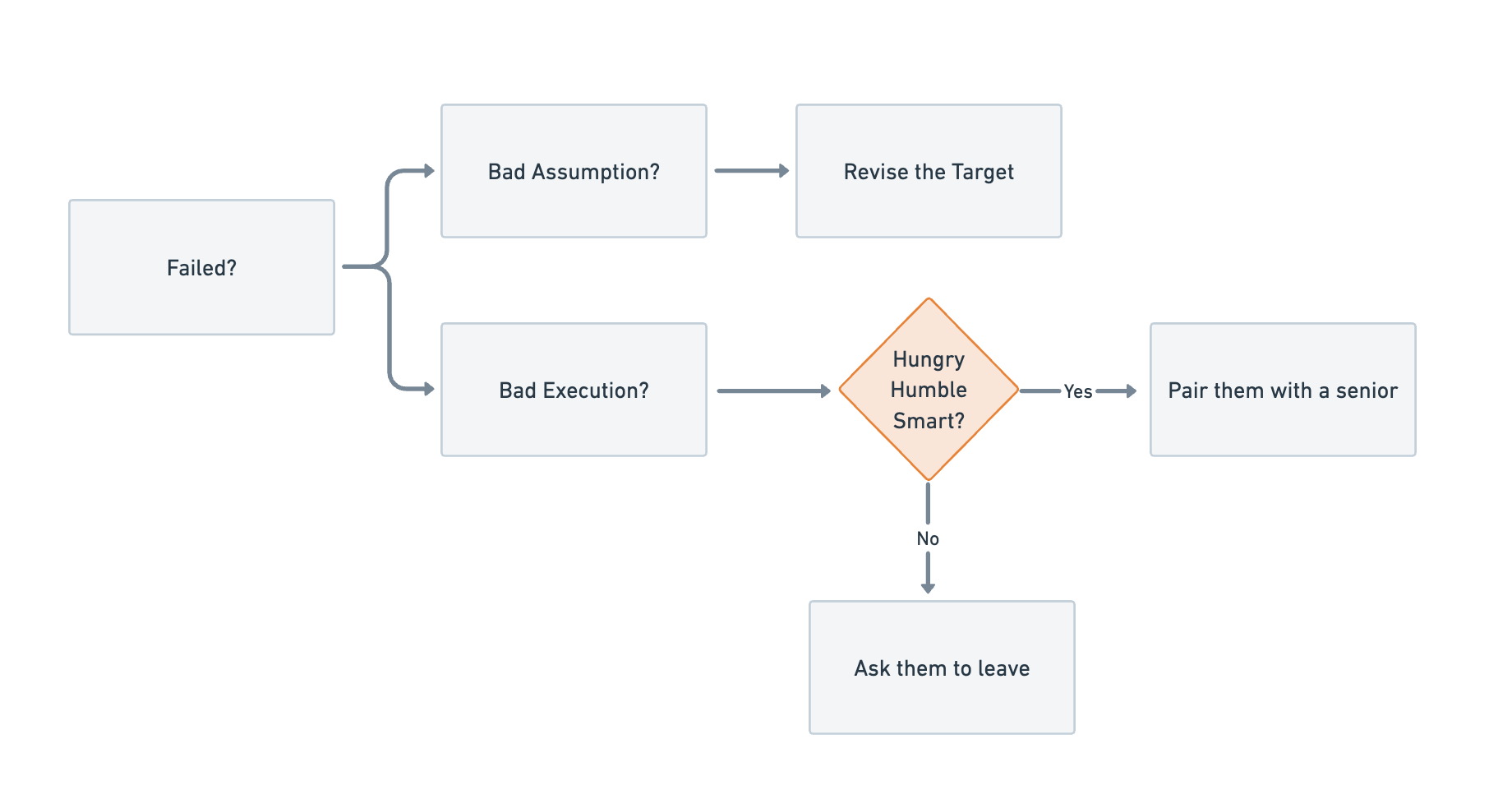Why You Miss Business Targets (And How to Fix It)
When you fail to hit a business target, there are always two reasons why you have failed:
- Failure of assumption
- Failure of execution
When you fail to hit a target in business, you need to simply ask whether this failure was the result of a bad assumption or bad execution. This helps you avoid failing at the same thing next time.
1. Failure of Assumption
To hit a target in business, you first need to set a number for that target (obviously). You need to know what number, when achieved, will make you happy.
But sometimes, when you're working on a new target, you have no idea what number to set. You don’t know what is a good or bad number for this target.
For example, let’s say that you are getting 10,000 website visits per quarter. You think that if you can increase this number, you can increase your revenue. So you set a target for a team member to increase this number by 500%.
By the end of the quarter, despite all the hard work, the team member only increased traffic by 50% instead of 500%. So, this is obviously a failure. But now the question is: Was this a failure of assumption or Fexecution?
Here, I’d say it’s a failure of assumption. Why? Because progress was made (50% increase), but it seems like the 500% target was simply unrealistic.
So, what’s the takeaway here? The team member actually did a pretty good job, and this failure was not the result of bad execution but a bad assumption.
So now, for the next quarter, instead of setting a 500% goal, you could aim for 50% or maybe 70% if you want to push the bar a little higher.
2. Failure of Execution
Let’s take the same example of increasing website visits per quarter.
Let’s say you set the target at 500% growth, but by the end of the quarter, the team member only achieved a 2% increase.
This is clearly a failure of execution. It simply shows that the team member doesn’t know how to do their job yet.
At this point, as a manager, you need to decide:
Can your business afford to keep paying this team member for another quarter to give them another chance, or do they need to leave the team?
What I usually do in cases like this is: If I see that the team member is hungry, humble, and smart, not only do I give them another chance, but I also try to support them as much as possible.
For example, what I usually do is pair them up with a senior person who has already been there and done that. You don’t need to hire this senior person full-time. You can bring them on part-time for a flat monthly fee or pay them hourly.
This way, the senior person can work with your hungry, humble, and smart team member and increase their chances of hitting the goal in the next quarter.
A Real Example of an Execution Failure
Here’s a real example from last year and how I applied this method:
Back in 2023, we were struggling with low online conversion rates at RealPars.
We had a strong online presence and good monthly website traffic, but our conversion rate wasn’t where we wanted it to be. So, I set a target to increase the conversion rate by 30% for the next quarter.
Since we had no idea how to do this, my first move was to hire an agency.
For two quarters in a row, we failed to hit the 30% target. So, I decided not to continue working with the agency.
Next, I assigned Shadnoush Shapournia (yes, she’s my sister) to this goal.
She also failed for two quarters in a row. But since I knew she was hungry, humble, and smart, I decided to continue supporting her. This time, by pairing her up with Holly Fong, a senior digital marketer who had been there and done that before.
The result?
With Holly’s practical guidance, Shadnoush hit the 30% conversion increase goal in the next quarter.
Not only that, but she has now achieved this goal six quarters in a row, increasing conversion rates by 30% every single quarter.
Below, you can see the actual conversion rate increase for 2024.

So, was this worth the effort? I’d say yes.
Note that we failed for four quarters in a row (two with the agency and two with Shadnoush, both execution failures), but we never gave up. And now, we continue to improve our conversion rate by 30% quarter after quarter.
What to Do When You Fail
To grow your business, you always need to set targets.
When you set a target, one of two things will happen:
- You hit the target.
- You fail.
When you fail, ask yourself a simple question:
Was this failure the result of bad assumption or bad execution?
- If it was a bad assumption, you’ll know by the end of the quarter. Simply revise the target and make it more realistic.
- If it was bad execution, you’ll also know by the end of the quarter.
Now, if the person you assigned the target to is hungry, humble, and smart, and if your business can afford to keep paying them, give them another chance and continue supporting them.
As mentioned, one of the best things you can do is pair them up with a senior expert who has been there and done that before. This dramatically increases the chances of hitting the goal.
However, if you realize they lack the qualities of being hungry, humble, and smart, you need to stop wasting your time, their time, and the company’s money, and ask them to leave the team.
Yes, it hurts, but what hurts more is losing money, and then being forced to shut down the company, and asking everyone to leave.
Below is a diagram you can use to decide what to do when you fail.

I learned this from Chris Wheeler of The Scalable Company.


Discussion